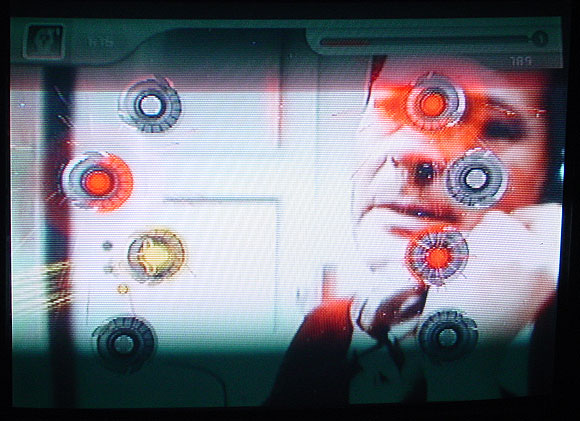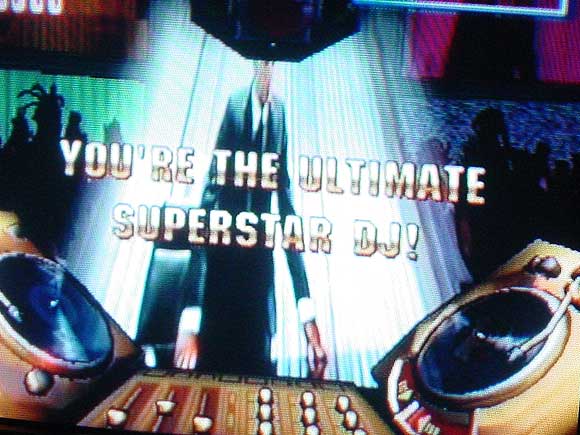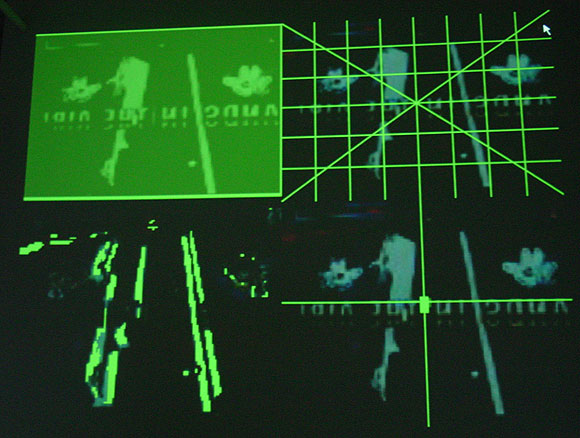View current page
...more recent posts
Slipstream fiction - bibliography; Bruce Sterling's original essay coining the term (and list of representative novels).
These are books which [science fiction] readers recommend to friends: "This isn't SF, but it sure ain't mainstream and I think you might like it, okay?" It's every man his own marketer, when it comes to slipstream.John Clute prefers the term "Fabulist," which sounds more like the known "Magic Realism," whereas I believe Sterling was really thinking his way around an unidentified genre.



My photos of JODI's installation Composite Club at vertexList. The exhibit closes today--go if you can! Efrain Calderon Jr explains the art here; in a nutshell, it repurposes a game-related video camera (coupled with motion recognition software) called an "Eyetoy," designed to turn a child into a human joystick or data glove. As the kid moves head, arms, and torso, the camera reads the motion and a videogame makes countermoves, keeping the child physically active and away from the Doritos bag. Instead of kids, JODI has aimed the Eyetoy on films ranging from cyberpunk classics to Sophia Loren/Marcello Mastroianni romances. The movements of those films trigger video game actions, which are simultaneously layered over the films. Yes, this means you can watch Darth Vader play an anime ping pong player, but such one-to-one matchups happen only intermittently. (The bottom photo, a moving projection on the gallery wall, shows the various formal attributes the camera reads while the movie plays--screen position, light/dark values, etc. The top two are screenshots of "games" in progress.)
JODI (Dirk Paesmans and Joan Heemskerk) are the most painter-like artists working with computers and video today. Imagine Robert Rauschenberg using such tools at the time he did his "combines"--his work was called Neo-Dada and bridged Abstract Expressionism and Pop and that's essentially what JODI does now, with their densely layered amalgam of Japanese videogame weirdness and cult film cinematography, dissolving and mutating before your eyes. The conceit of the "the movie playing the game" isn't always comprehensible in these clips but for me this is a feature, not a bug. Art isn't about rubbing one ordered system up against another to get a third, but rather achieving an energized chaos that reveals something about the initial ordered systems, a la a Burroughs cut up. This revelatory randomness launches Composite Club beyond the pat realm of XYZ new media art. The artists use software like an auto-destructing Jean Tinguely painting machine and let chance processes do the work. They then discerningly edit motion captures of game play to make "best of" DVDs. The results are stunning--as good as anything you'll see in the galleries these days.
An earlier discussion, on why JODI isn't showing with one of the Manhattan cyber-galleries, is here.
